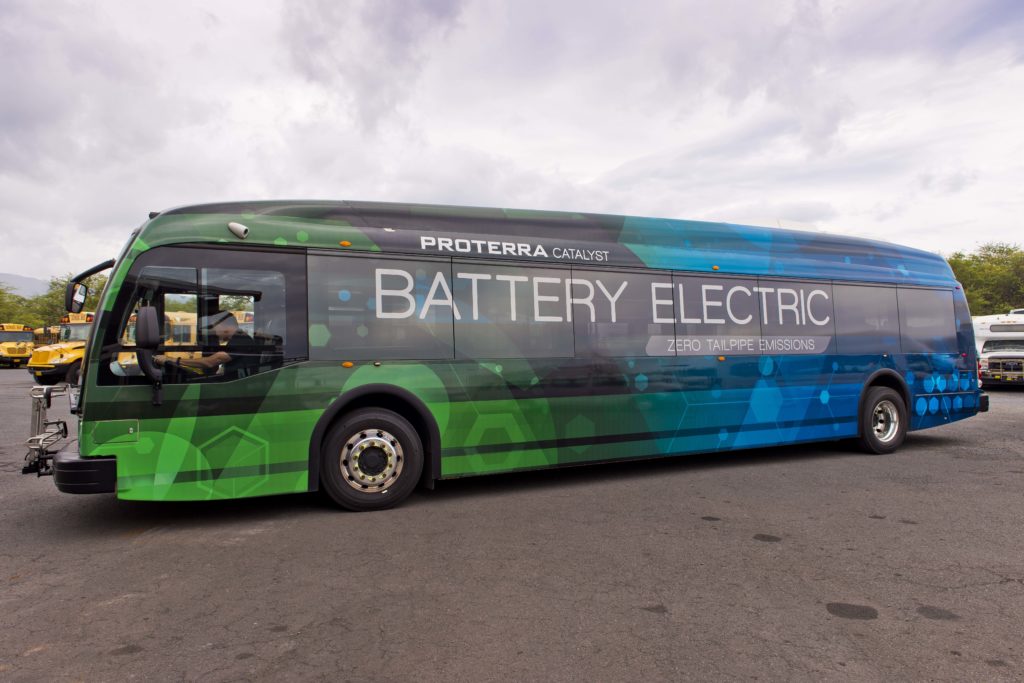Hawaiian Electric Launches Pilot Program To Encourage More Electric Buses

The Public Utilities Commission approved Hawaiian Electric’s pilot program that will encourage the growth of electric bus fleets by helping bus operators reduce upfront costs of installing charging equipment on O‘ahu, Maui and Hawai‘i Island.
The “eBus Make-Ready Infrastructure Pilot Project” is the latest initiative launched by Hawaiian Electric under its commitment to support and accelerate the electrification of transportation as part of a clean energy vision for Hawai‘i.
The approval clears the way for Hawaiian Electric to install “make-ready” infrastructure that will support up to 20 electric bus charging ports at five to 10 qualifying customer sites over three years on the three islands. The company will use the pilot program to inform the design of a potential full-scale program.
Under the pilot program, Hawaiian Electric will pay for and manage construction of equipment and wiring up to and beyond the fleet operator’s meter to the point where the chargers would be installed. The customers’ responsibilities will include installing and maintaining the charging station(s), the cost of the electricity used, and procuring the electric buses.
“With Hawai‘i committed to achieving zero carbon emissions by 2045, it’s important that we move aggressively to reduce greenhouse gas emissions in ground transportation,” said Aki Marceau, director of electrification of transportation at Hawaiian Electric. “As a rider of Honolulu’s public bus system, I recognize firsthand that electrifying our bus fleets will allow everyone access to the health, environmental and economic benefits of electric vehicles.”
Hawaiian Electric is in the process of ramping up the program and expects to begin accepting applications from prospective participants by January 2022. The program will be available to bus operators that meet specific eligibility criteria.
For bus fleet operators, two obstacles to electric bus use are cost – which includes the buses, charging stations and infrastructure – and operational adjustments needed to the switch from diesel fueling to charging. Hawaiian Electric helps address these issues by assuming some of the expense. After an initial investment, operating an electric bus could save more than $400,000 over its lifetime due to lower fuel and maintenance costs.
Switching to electric buses as fleets are replaced or expanded will reduce diesel use and tailpipe emissions, benefiting riders, drivers and the communities in which they operate. In its application to the Public Utilities Commission, Hawaiian Electric included an analysis of the pilot’s impact on greenhouse gas emissions. Factoring in the 2019 composition of generation resources on Hawaiian Electric’s O‘ahu electric grid, and depending on the time of charging, net GHG emissions were estimated to be 27% to 38% lower per mile for an electric bus compared to a diesel-powered bus.
Hawaiian Electric anticipates the local electric bus market will grow over the next 12 to 15 years, and that the costs undertaken in the pilot are a preliminary investment that will result in broader ongoing benefits to all customers in the future.








